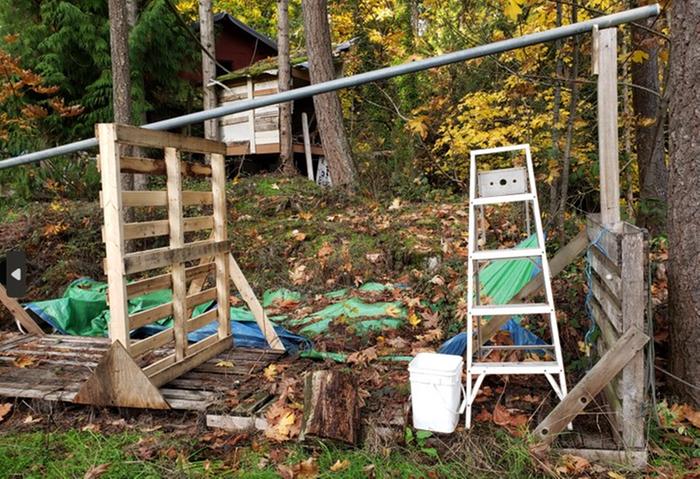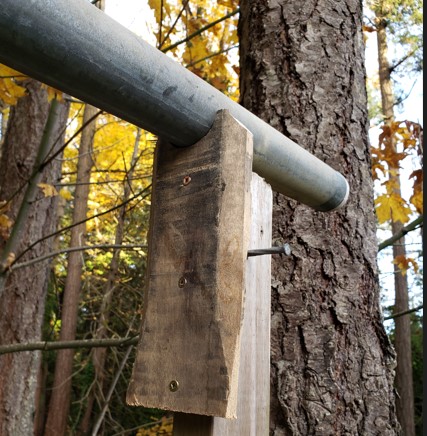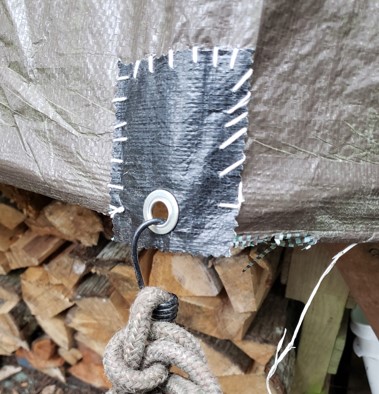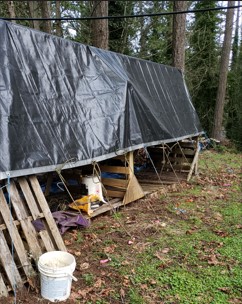
 14
14







Visit Redhawk's soil series: https://permies.com/wiki/redhawk-soil
How permies.com works: https://permies.com/wiki/34193/permies-works-links-threads
 9
9




 9
9




Trees are our friends
 8
8




 5
5




Jay Angler wrote:I would *really* like to significantly reduce the numbers of tarps on my homestead, but with our constant winter wet, I don't expect to get my wish anytime soon.
Other ideas are welcome!
 9
9




 7
7




Hubby tends to buy the tarps on special. We have migrated to brands we've had better longevity with, but we have to watch when we stock up, as we've noticed a number of products that have "cheapened down" over the last 5 years. Unfortunately, the issue often comes down to lack of time to build something better, rather than the up-front cost issues.Scott Weinberg wrote:Jay, do you have a goal of a cost per sq ft/ year. in other words, are you expecting the cost of coverage to be at $0.40 cents per year or double that? or way less.
Two of our current "tarped" structures are based on old car shelter frames. They still need to be covered with something!Depending on your size, some very low cost hoop structures have worked well. (of course snow load is also a factor)

Visit Redhawk's soil series: https://permies.com/wiki/redhawk-soil
How permies.com works: https://permies.com/wiki/34193/permies-works-links-threads
 11
11




With blessings, always

 11
11




I totally agree, but had to laugh. Figuratively this is true, yes, but a rope actually literally cuts it, because all its imperfections, seen or unseen, add friction, acting as knives as the tarp shifts and flexes.Things I've done to help with problem 1:
A) try to create a solid ridgepole. A rope doesn't cut it!
"Never doubt that a small group of thoughtful, committed citizens can change the world; indeed, it's the only thing that ever has."-Margaret Mead "The only thing worse than being blind, is having sight but no vision."-Helen Keller
 7
7




Do what you want, but don't hurt yourself and don't hurt anyone else
 2
2




Miss you, Dr. Owen Geiger.
 2
2




Do you find they grow moss all winter?Tom Millican wrote:I have given up on the poly tarps of any kind. The sun destroys them quickly. I have found that (more expensive than poly) canvas tarps are cheaper over their lifetime due to the longer life.
Visit Redhawk's soil series: https://permies.com/wiki/redhawk-soil
How permies.com works: https://permies.com/wiki/34193/permies-works-links-threads
 3
3




 6
6




 6
6




 6
6




 2
2




 5
5




 3
3




 8
8




Film at the speed of life
https://www.patreon.com/slowfilms
 1
1




K Rawlings wrote:Another idea for tarp material. This time of year, at least in the northern climes, you'll start seeing boats removing their shrinkwrapped boat covers. ... The stuff is quite durable and handles UV pretty well.
 6
6




Trees are our friends
 5
5




Do what you want, but don't hurt yourself and don't hurt anyone else

|
No, tomorrow we rule the world! With this tiny ad:
Rocket Mass Heater Resources Wiki
https://permies.com/w/rmh-resources
|






